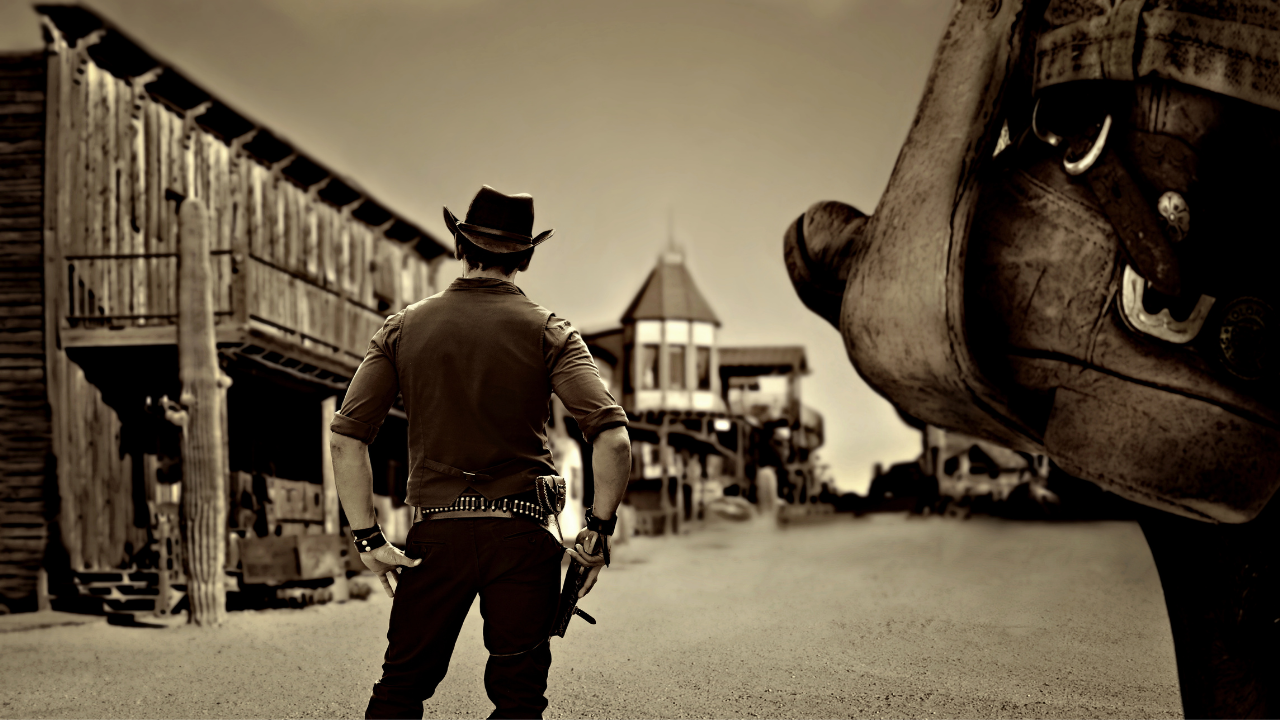path of the storyteller / blog
Fight, flight, freeze, fawn: How does your hero react to pressure?
There’s a key question that can make or break your storytelling, and it’s this:
How does your main character react to pressure?
- Do they fight back?
- Do they run away?
- Do they freeze up like a deer in the headlights?
- Do they abandon their goals completely and try to placate (or even join) the enemy?
These four strategies are psychological patterns that describe how humans react to stress, pressure, or trauma.
You may have heard them described as fight, flight, freeze, and fawn.
And how is this relevant to writing fiction, you ask?
It’s story structure, my friends! A story depicts a central character with important, high stakes goal who encounters obstacles along the way. The struggle to achieve the goal despite opposition creates a journey of meaningful transformation.
Or, to put it simply:
How your main character reacts to pressure is literally the plot of your book.
For that reason alone, this subject is worth investigating, don’t you think?
Here’s another reason:
Wri...
The obstacle is the storytelling
In the mood for a little Stoic wisdom? Check out this quote from Marcus Aurelius, who was a Roman Emperor, a philosopher, and in this case, a source of some spot-on advice about storytelling:
“The impediment to action advances action. What stands in the way becomes the way.”
Isn’t that great? Of course, Marcus Aurelius was talking about real life, which he rightly observed was full of obstacles.
We often think of obstacles as misfortunes, setbacks, or strokes of bad luck. Not our normal condition, but a rough patch we have to get through so we can resume the smooth sailing that we think of as our due.
Marcus Aurelius asserts that's not so. The obstacle is the way. There is no other.
Which brings us to the topic of story structure. Yes, there are three acts, and stages of the hero’s journey, and character archetypes, and arcs of transformation—all of these are incredibly useful and practical ideas that give us a nuanced understanding about what goes on in well-told stories. They...
Better writer, better person?
The truism that reading makes us better people is well explored, but does writing make us better people? I argue yes. Here’s why.
I’ve been reading George Saunders’ terrific collection of essays about Russian short fiction, A Swim in a Pond in the Rain. It’s a book about what makes writing good with an interesting limitation, which is that the work held up for analysis is offered in English translation and Saunders doesn’t speak Russian.
Saunders notes the shakiness of the project when he describes the day a Russian scholar visits his classroom to explain how the tale currently under examination reads in the original Russian.
Saunders and his students are flabbergasted to confront just how much of the author’s intent has been lost to them. The jokes! The wordplay! The voice! None of it survives intact. The version of the story they’re scrutinizing for clues about good writing technique is a pale imitation of what Gogol actually wrote.
Yet still they find value in the exercise, ...
who’s the opponent?
I was doing a little research into Stoic philosophy—like ya do!—and came across a quote from Seneca:
“I judge you unfortunate because you have never lived through misfortune. You have passed through life without an opponent—no one can ever know what you are capable of, not even you.”
—Seneca (4 B.C.E. — 65 C.E.)
To be thankful for one’s misfortunes is Stoic to the max. Leave it to a Roman to pull no punches!
But look at that second sentence: Without an opponent, “no one can ever know what you are capable of, not even you.”
For our hero to pass through a story without an opponent would make for a pretty dull tale. And yet, experience suggests that the single aspect of good storytelling that developing writers most want to punch in the face is the necessity of filling their pages with obstacles.
I get it. No one wants obstacles in real life. We want smooth sailing, even if Seneca says it’s not really optimal for our personal growth.
But what is a story but a controlled exper...
does your story need a villain?
It’s been said that a story is only as good as its villain. Agree or disagree?
The truth is, our heroes need obstacles. Other characters in the tale may be instrumental in providing those obstacles. Why might they do this? Does being a “villain” equate to being “evil”?
More questions about villainy abound! How do we create “bad guys” without writing stale clichés? And how can we bring ourselves to write fully-imagined characters that we ourselves find unsavory?
Mwah-ha-ha! Clearly, the role of the “villain” is fraught with complexity. That’s what we dig into this week.
My weekly livestream happens on Wednesdays at 1 PM Pacific. Come live and participate! Or catch the replays here on the blog.
To watch live and ask questions, you can join the Path of the Storyteller Facebook group right here.
And subscribe to the YouTube channel here.
good writers make bad things happen
Look, I’m a nice person. I know you’re a nice person too.
Yet when we put on our storyteller’s hats, being nice is a big mistake.
Think of it: Our protagonist is on a journey of meaningful change. What’s more likely to spur a life-altering transformation?
- An evening on the sofa under cozy blankets, complete with hot cocoa and Netflix?
- Or an urgent, high-stakes journey way outside the comfort zone, overcoming one tough obstacle after the next?
We owe it to our heroes to put them through the wringer. But it’s not always easy to do! In today’s livestream I talk about:
- why writers struggle to give up being nice
- the trouble with “conflict” as the basis for scenes
- how to keep crafting obstacles without being repetitive
Some great audience questions get addressed, too! Thanks to all who participated during the livestream, it made for a great discussion.
My weekly livestream is on Wednesdays at 1 PM Pacific. Come live and ask questions! Or catch the replays here on the bl...
whose story is it?

The story of Thanksgiving that I was taught growing up was mostly a bunch of hooey.
That familiar fiction of friendly Pilgrims and helpful Native Americans getting along feels terrific to tell and hear, if that’s the only story you know. It has no bad guys. It both instructs and inspires. If only we could all be so peaceful, welcoming, and cooperative!
The problem, of course, is that it’s not the truth. There’s a gut-wrenching history of slaughter and appropriation just outside the margins of the tale that I was taught as a child.
In terms of writing craft, we’re talking about point of view. Who’s doing the telling? To whom? And, importantly, to what end?
It’s said that history is written by the victors, but serious historians are always challenging the narratives offered by their predecessors. New research and new perspectives can’t change what happened in the past, but they can bring the historical tale into closer alignment with the truth. This work is ongoing.
Writers of fi...
shootout at the corral

You know I love a good pithy saying. Here’s one I made up, just for you: Good books get read; great books get reread.
Think of the books on your shelves. Most of them you’ll read once, but the ones you absolutely love you will surely read again and again.
A great book is a friend for life. The better you know it, the more you love to reread it — and you can take that as proof that great storytelling does not depend on keeping secrets from the reader.
A common authorial misstep is to conceal the hero’s true mission from the reader.
Why do this? These authors mistakenly assume that secrecy equals suspense. They hope that the reader will keep reading in order to find out what’s really going on.
It’s a false hope, alas. The reader keeps reading to find out not what the climactic scene of the plot is, but how that scene turns out.
Will the Wizard help Dorothy get home to Kansas? Will Katniss survive the Hunger Games? Will Bilbo prevail when he finally comes face to face with the dr...
facing the shadow

Yesterday’s talk of tricksters got me thinking about the archetypal energies that infuse every story. I call them energies because I consider storytelling a form of energy.
If that sounds a bit vague or metaphysical to you, consider this: A story is not its physical form. It is not the book between hardcovers; it is not the film on celluloid or digital data; it is not the little clickable box on your Netflix home page that takes you (at last!) to the new season of The Crown. Now you know what I’m doing this weekend!
Story is a non-physical phenomenon that connects both author-to-reader and reader-to-reader. It’s the deep engagement with fictional characters in a made-up world; the feeling of having taken a journey with those characters and being altered by the trip, just as we are affected by the events of our real lives.
Oral traditions may manifest in written versions that later get made into movies and graphic novels, but which one of them is the story? None of them, really. The...
good bones

You know the old joke about “boneless chicken,” right? How did it walk?
As a long-time vegetarian, I don’t worry much about bones in my cooking! But I think about them All. The. Time. in my writing.
Just as the overall story has a structure, so must each scene. This is especially true in the middle, or second act.
Why? The middle is most of your book. A long expanse without some sturdy support is not going to hold up. It’s a tent without a tentpole.
The middle’s job is to place obstacle after obstacle in the way of your hero’s progress toward her goal, or mission. Think of it as a series of tests. Some, your hero will pass; some she’ll fail; some she’ll barely scrape through.
Each test forces her to level up in some way (a story is a journey of change, as I’m sure you recall!). But a series of tests can too easily look like this: Test. Test. Test. Test. Test. Scene after scene after scene.
Monotonous, no? And that’s most of the book! So how does the middle not turn to repetitive,...


